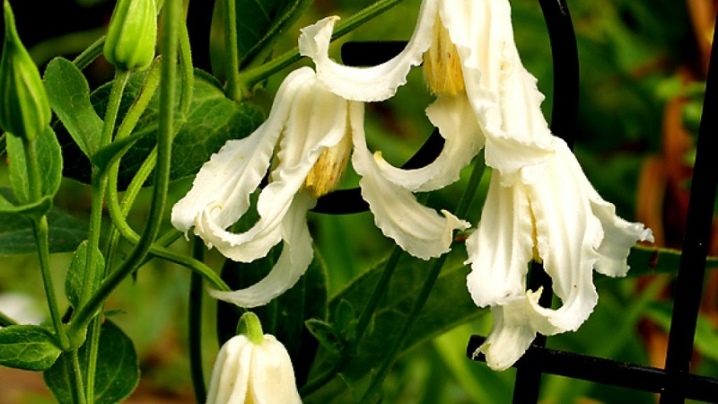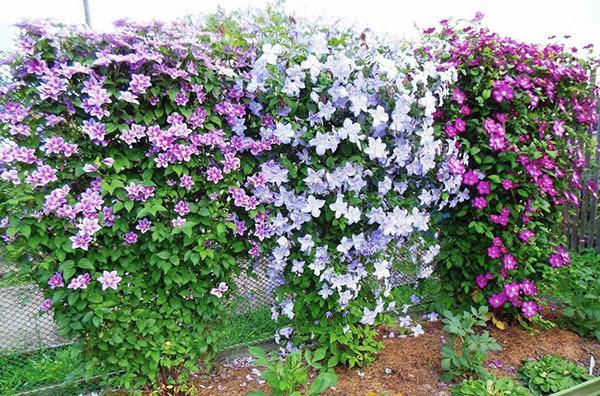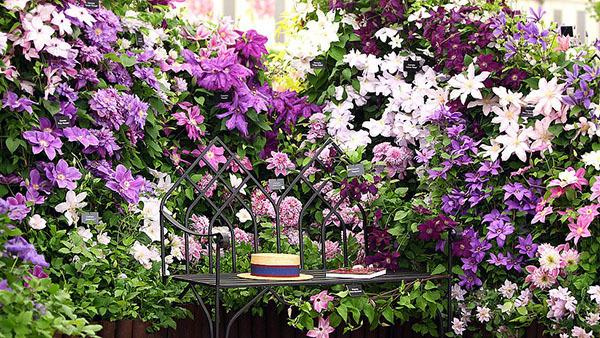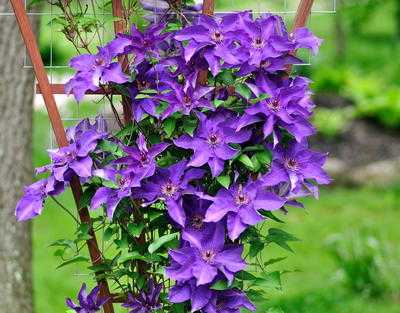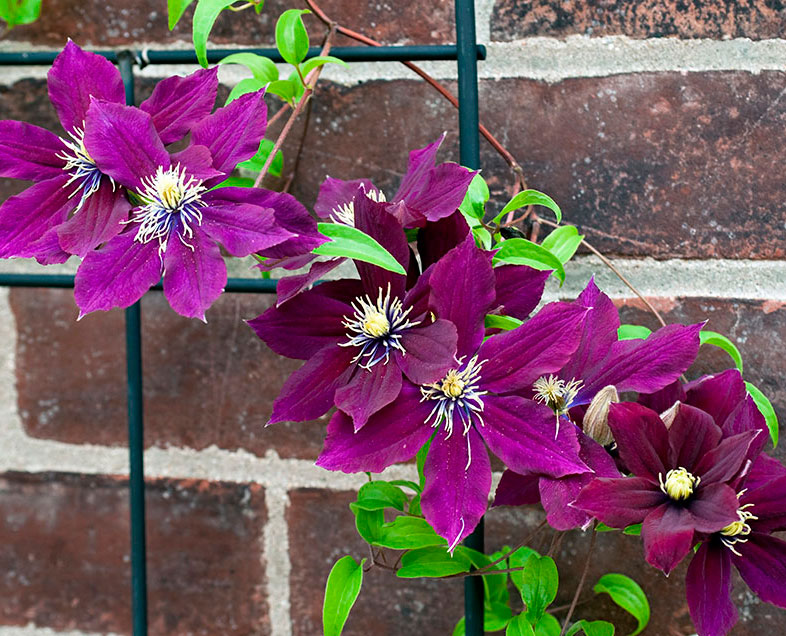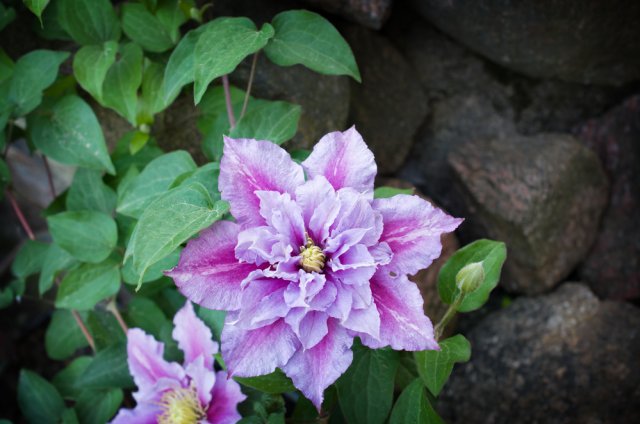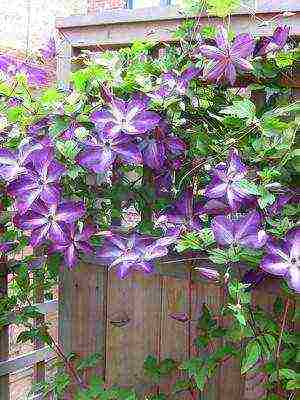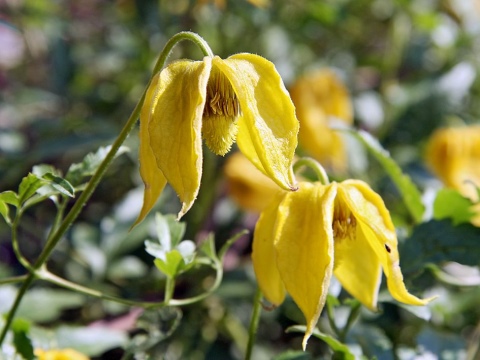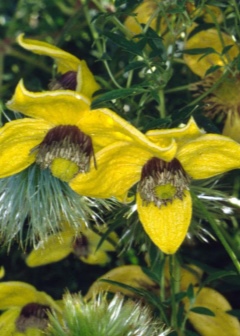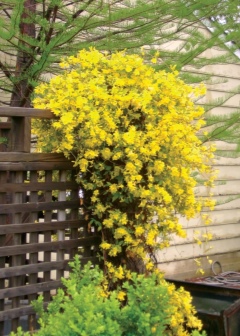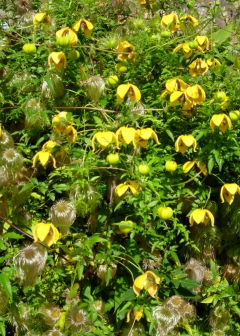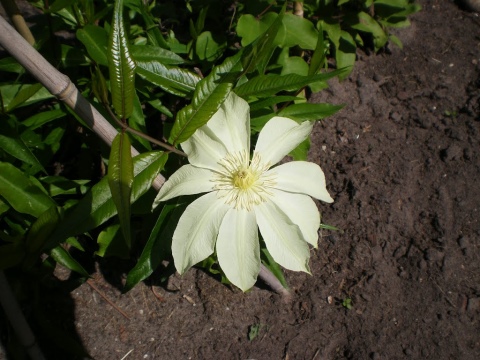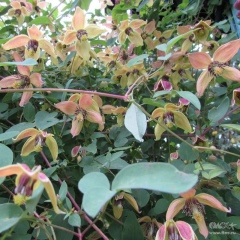Dates for planting seedlings, site selection
It is possible to plant a perennial liana stalk in open ground both in spring and autumn.
In latitudes with cold climatic conditions, planting is best done in spring, in early May. The landing site should be calm. Clematis loves neutral drainage soil with useful substances. The fertility of the soil can be raised with a high-quality mixture of fertilizer with phosphorus (150 gr.), Dense peat mass (1 bucket), sand (1 bucket), compost (1 bucket).
The seedling should have one good shoot and good roots. It is installed in a pit, at the bottom of which there is already drainage, then it is covered with a part of the prepared mixture and watered abundantly
When planting, you should pay attention that the root collar remains at a ten centimeter depth. The rest of the earth is then gradually filled up
In the autumn, clematis are planted in the south; the warm and mild climate conditions of such latitudes allow this to be done in September-October. In this case, a climbing perennial is planted with vegetative buds that have already appeared. The planting option is spring, but the planting hole should be covered with all the soil at once. The surface layer of the soil must be mulched with sawdust or fallen leaves. When spring comes, in order to make it easier for young shoots to break through, the soil from the hole to the depth of a finger is selected, and by the end of the growing season it returns back.
Landing
The timing of planting these flowering plants should correlate with the climatic features of the area. So, in the northern regions, it is best to plant bush clematis in the spring. In the south, these plants can be planted in spring, summer and autumn.
Planting bush clematis should be done in sunny or slightly shaded areas. Approximately 6-7 months before planting seedlings, it is recommended to dig the ground in places where young plants are supposed to be placed. During the digging, a nutrient mixture is introduced from the following components (per 1 square meter of the area of the site):
- 10 kg of deciduous humus;
- 350-400 g dolomite flour;
- 100-150 g of superphosphate.
A drainage layer 6-10 centimeters thick is placed at the bottom of the pits. Each pit is filled with a loose and light soil mixture consisting of fertile garden soil (2 parts), compost (2 parts) and sand (1 part). In addition to the mixture, it is recommended to add complex fertilizer and a little wood ash. The pits are not completely filled, focusing on the size and diameter of the roots of the seedlings.
Planting is carried out carefully, holding the plant in an upright position with your fingers. The roots of the seedling should be gently spread
Having placed the seedling in the hole, carefully cover its roots with soil mixture from all sides
It is important to note that when planting young plants are recommended to be slightly buried in the ground, making sure that at least one bud remains on the surface. After planting, the soil around the seedlings is generously watered
In the future, watering is carried out every other day, spending about 7-10 liters of water for each young plant.
If perennials are planned to be used for vertical gardening, then during or after planting, a support must be placed next to the clematis. If the plants are supposed to be grown as ground covers, they will need to provide a sufficient amount of free space.
Clematis flowering times by months
With proper care, the first years after planting, the plant actively strengthens the root system and vine. Only after three years can you see the flowering of clematis. If the vine throws out the buds earlier, it is worth getting rid of them so that the seedling creates a beautiful, solid base.
Florists strive to acquire various varieties of clematis, since the appearance of buds begins at different times, respectively, from spring to early autumn, long flowering with a change of colors is ensured.
Starting in spring and capturing the first month of summer, they bloom:
- Saw.
- Miss Bateman.
- Barbara Jackman.
It should be noted that some varieties bloom fully in the spring and after a short rest - in the fall.
Grape-leaved Clematis begins to delight with flowering in early June. The plant does not like drafts and gusts of wind, respectively, the place must be selected taking into account these requirements, and planting on an open surface is not recommended. Liana is comfortable in places that are slightly shaded. The soil should be sufficiently nutritious and not clogged.
At the height of summer, they bloom:
- Roger Cardinal.
- BizBjubili.
Intense flowering of the vine pleases in July, but nevertheless, the plant feels comfortable in shaded areas.
When nature prepares for winter, some autumn varieties pamper with colors and lush blooms:
- Miss Bateman;
- Saw;
- JeepyQueen.
In order for the vines to bloom near the house all season, you must definitely buy yourself:
- Multi Blue;
- White hot lemon.
Thus, flowering is ensured from the beginning of June to the end of August. Ville de Lyon can bloom from May to September.
Florists, keen on breeding varieties, have created frost-resistant clematis:
- Ballerina;
- Madame de Cultre;
- Nelly Morez.


